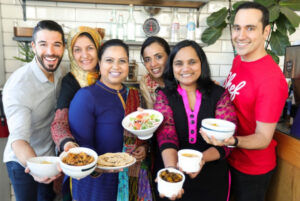Meesho has more than 120 Mn Monthly Active Users (MAUs) on its platform
Meesho’s mission is to democratise internet commerce for everyone in India: Sanjeev Barnwal
Allowing users to search in vernacular languages has especially been a “game changer” for Meesho, said Barnwal
Bengaluru-based social commerce startup Meesho has grown about 5X in the last year, its founder and CTO Sanjeev Barnwal said.
Speaking at the second edition of Inc42’s The Makers Summit, Barnwal also said that Meesho, which was started about seven years ago, currently has more than 120 Mn Monthly Active Users (MAUs) on its platform.
Tech innovations to address the typical challenges involved in dealing with small and medium-sized businesses (SMBs) and constant rethinking of the existing business model have been the biggest drive behind Meesho achieving this scale today, he said.
According to Barnwal, since Meesho solves problems for SMBs, and its target audience is in Tier 2 and Tier 3 cities of the country, the platform’s features are built keeping their challenges in mind. As these groups of users are less tech-savvy, Meesho has been highly focused on personalisation strategy, keeping UX designs simple, maintaining a consistent and static UI design, and usage of high visibility filters.
In fact, one of the features that have got the platform high traction is image search, said Barnwal.
Allowing users to search in vernacular languages has also been a “game changer” for Meesho. Currently, Meesho’s marketplace allows users to search in eight languages.
Barnwal said an unbranded marketplace like Meesho faces issues of price discovery and quality control. However, the startup solves these issues by leveraging technology like artificial intelligence (AI).
“Our mission is to democratise internet commerce for everyone in India,” Barnwal said while talking about the way Meesho functions today. Meesho has a tech-driven horizontal marketplace where on one side there are suppliers, manufacturers and wholesalers, who are largely SMBs, and on the other end, there are users from below Tier 1 cities in the low- and middle-income segments.
“We are making sure that we are able to change their lives by providing them with affordable products, which otherwise they don’t have access to,” he added.
However, Meesho’s business model has undergone several changes since its inception and has undergone two iterations. Barnwal said that the startup kicked off its journey with a business model that was essentially trying to solve problems faced by SMBs in the fashion segment in a hyperlocal setup.
In the beginning, Meesho employees would visit fashion shops in Bengaluru and list them on its app, enabling users to buy from these sellers. However, they soon realised that there were multiple problems with that business model. Barnwal and his team noticed an emerging trend where the sellers at the local shops were trying to leverage WhatsApp chat to inform customers about a new product at their outlet. Noticing how inefficient that model was, Meesho decided to solve that problem for the local sellers, which Barnwal calls the first pivot towards building Meesho.
Many other additions took place in its business model, leading the startup to its current form. However, according to Barnwal, its main mission was always clear – digitising India’s SMB segment. With the entire SMB commerce being always offline, Meesho saw its biggest opportunity in that space, he said while explaining the company’s business segment.
India has always been primarily a small business economy and 85% of the entire retail in the country today comes from small businesses, said Barnwal. Through the ecommerce revolution that took place with Flipkart and Amazon, SMBs were left out as the ecommerce marketplaces were mostly focused on selling branded products.
The startup is currently one of the leading names in the booming social commerce segment in India.
Booming Social Commerce Segment
As the ecommerce market in the country continues to grow, the fashion ecommerce segment has seen the emergence of new forms of selling such as social commerce and live commerce. New trends and ideas are emerging quite rapidly in this segment.
According to a 2020 Bain & Company report, digitally connected Indians spend an average of three hours per day online, which includes more than two hours in messaging, social media networking and watching videos.
This creates a huge opportunity for social commerce to evolve. Today, millions of small retailers are finding innovative ways to sell directly to consumers through various social formats such as conversational commerce on chat platforms, video-led commerce and more.
The report estimated that India’s social commerce segment would be worth $20 Bn by 2025 and about $70 Bn by 2030.
On the other hand, the Indian ecommerce market is estimated to reach $400 Bn by 2030, according to a recent Inc42 report.









